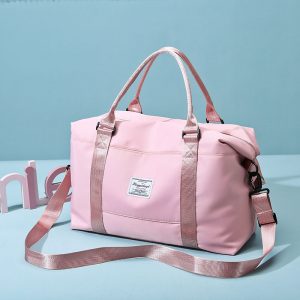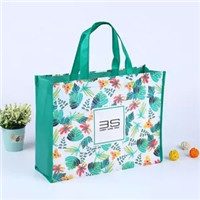People often ask what material non-woven bags are made of. Today, the editor of Yongye Packaging will analyze this problem for everyone;
The main material for non-woven bags is non-woven fabrics.
What is non-woven fabric? What are the advantages and disadvantages of non-woven fabric? How to maintain it?
What is non-woven fabric
Non-woven fabric, also known as non-woven fabric, is composed of directional or random fibers. It is a new generation of materials. It is moisture-proof, breathable, flexible, light, non-combustible, easy to decompose, non-toxic and non-irritating, rich in colors, and low in price. , Recyclable and other characteristics. For example, polypropylene (PP material) pellets are mostly used as raw materials, which are produced by continuous one-step method of high-temperature melting, spinning, laying, and hot-pressing. Because of the appearance of cloth and a certain These properties are called cloth.
The non-woven fabric has no warp and weft threads, it is convenient to cut and sew, and it is light and easy to shape, which is deeply loved by craft lovers.
Because it is a fabric that does not need to be spun and weaving, it just oriented or randomly arrange the textile short fibers or filaments to form a web structure, which is then reinforced by mechanical, thermal bonding or chemical methods.
It is not interwoven and braided one by one, but the fibers are directly bonded together by physical methods. Therefore, when you get the sticky scale in your clothes, you will find that it is It is impossible to draw out a single thread. Non-woven fabric breaks through the traditional textile principle, and has the characteristics of short process flow, fast production rate, high output, low cost, wide use, and multiple sources of raw materials.
According to the composition of non-woven fabrics, there are polyester, polypropylene, nylon, spandex, acrylic, etc.; different components have completely different non-woven fabric styles.
Non-woven fabric is a kind of non-woven fabric, which directly uses polymer chips, short fibers or filaments to form fibers through airflow or mechanical netting, and then undergo hydroentangling, needle punching, or hot rolling reinforcement, and then finishing The formed non-woven fabric. A new type of fiber product with soft, breathable and flat structure. The advantage is that it does not produce fiber debris, is strong, and is silky soft. It is also a kind of reinforcing material, and it also has a cotton feel, and Compared with cotton fabrics, non-woven bags are easier to form and cheaper to manufacture.
Advantages of non-woven fabrics:
1.Light weight: Polypropylene resin is used as the main raw material for production, with a specific gravity of 0.9, which is only three-fifths of cotton. It is fluffy and feels good.
2. Softness: It is composed of fine fibers (2-3D) and is formed by light-point hot-melt bonding. The finished product is moderately soft and comfortable.
3. Water repellent and breathable: Polypropylene slices do not absorb water, have zero moisture content, and have good water repellency. It is composed of 100 fibers and has good air permeability. It is easy to keep the cloth dry and easy to wash.
4. Non-toxic and non-irritating: The product is produced with FDA food-grade raw materials, does not contain other chemical ingredients, has stable performance, is non-toxic, non-odor, and does not irritate the skin.
5. Antibacterial and anti-chemical agents: Polypropylene is a chemically blunt substance, not moth-eaten, and can isolate the corrosion of bacteria and insects in the liquid; antibacterial, alkali corrosion, and the strength of the finished product will not be affected by erosion.
6. Antibacterial. The product is water-repellent, does not mold, and can isolate the erosion of bacteria and insects in the liquid, and is not moldy.
7. Good physical properties. It is made of polypropylene spun and directly spread into a net and thermally bonded. The strength of the product is better than that of ordinary staple fiber products, the strength is non-directional, and the vertical and horizontal strengths are similar.
8. In terms of aspect, the raw material of most non-woven fabrics used is polypropylene, while the raw material of plastic bags is polyethylene. Although the names of the two substances are similar, their chemical structures are quite different. The chemical molecular structure of polyethylene It has considerable stability and is extremely difficult to degrade, so it takes 300 years for plastic bags to be decomposed; and the chemical structure of polypropylene is not strong, and the molecular chain can be easily broken, which can be degraded and is in a non-toxic form. In the next step of the environmental cycle, a non-woven shopping bag can be completely decomposed in 90 days. Moreover, the non-woven shopping bag can be reused 10 times, and the pollution degree of the environment after being discarded is only 10 of that of the plastic bag.
Disadvantages of non-woven fabrics:
1) Compared with textile fabrics, the strength and durability are poor.
2) Cannot be washed like other fabrics.
3) The fibers are arranged in a certain direction, so it is easy to split from the right angle direction, etc. Therefore, the improvement of the production method is mainly focused on the improvement of preventing splitting.
Maintenance of non-woven fabrics:
1. Keep clean, change and wash frequently to prevent moths from breeding.
2. When storing in the season, it must be washed, ironed, dried and sealed in a plastic bag and placed flat in the closet. Pay attention to shading to prevent fading. It should be often ventilated, dusted and dampened, and not exposed to the sun. Put it in the closet Anti-mold and anti-moth tablets to prevent cashmere products from being damp, moldy and insects.
3. When wearing inside, the matching outer lining should be smooth. Do not put hard objects such as pens, key cases, mobile phones, etc. in the pockets to avoid friction and pilling. When wearing outside, try to reduce the friction with hard objects (such as sofa backs, armrests, etc.) , Tabletop) and hooks. It is not easy to wear for too long. It must be stopped or changed in about 5 days to restore the elasticity of the clothes to avoid fiber fatigue and damage.
4. If there is pilling, do not pull it forcefully, and use scissors to cut off the pompom, so as not to be unable to repair due to disconnection.































